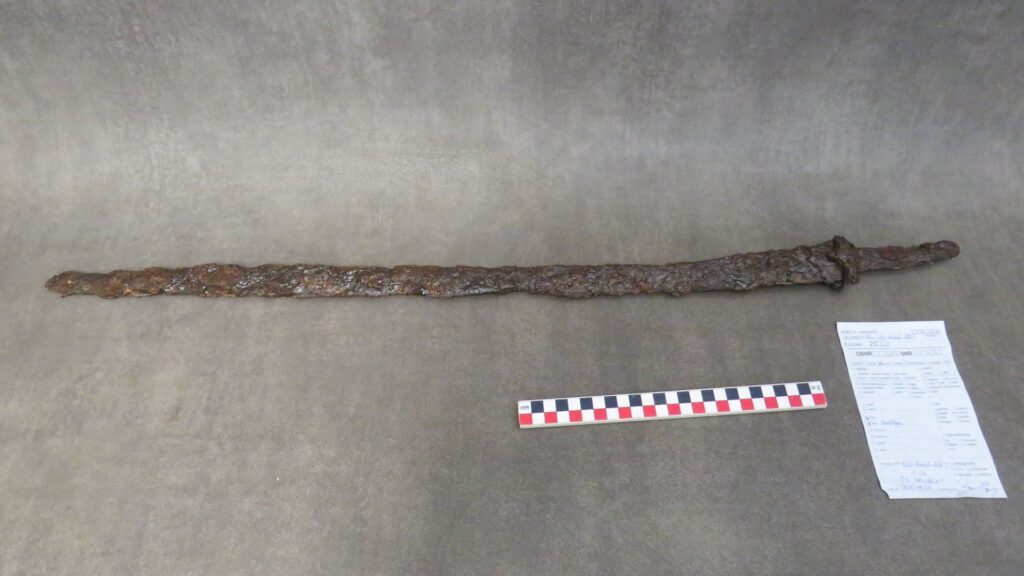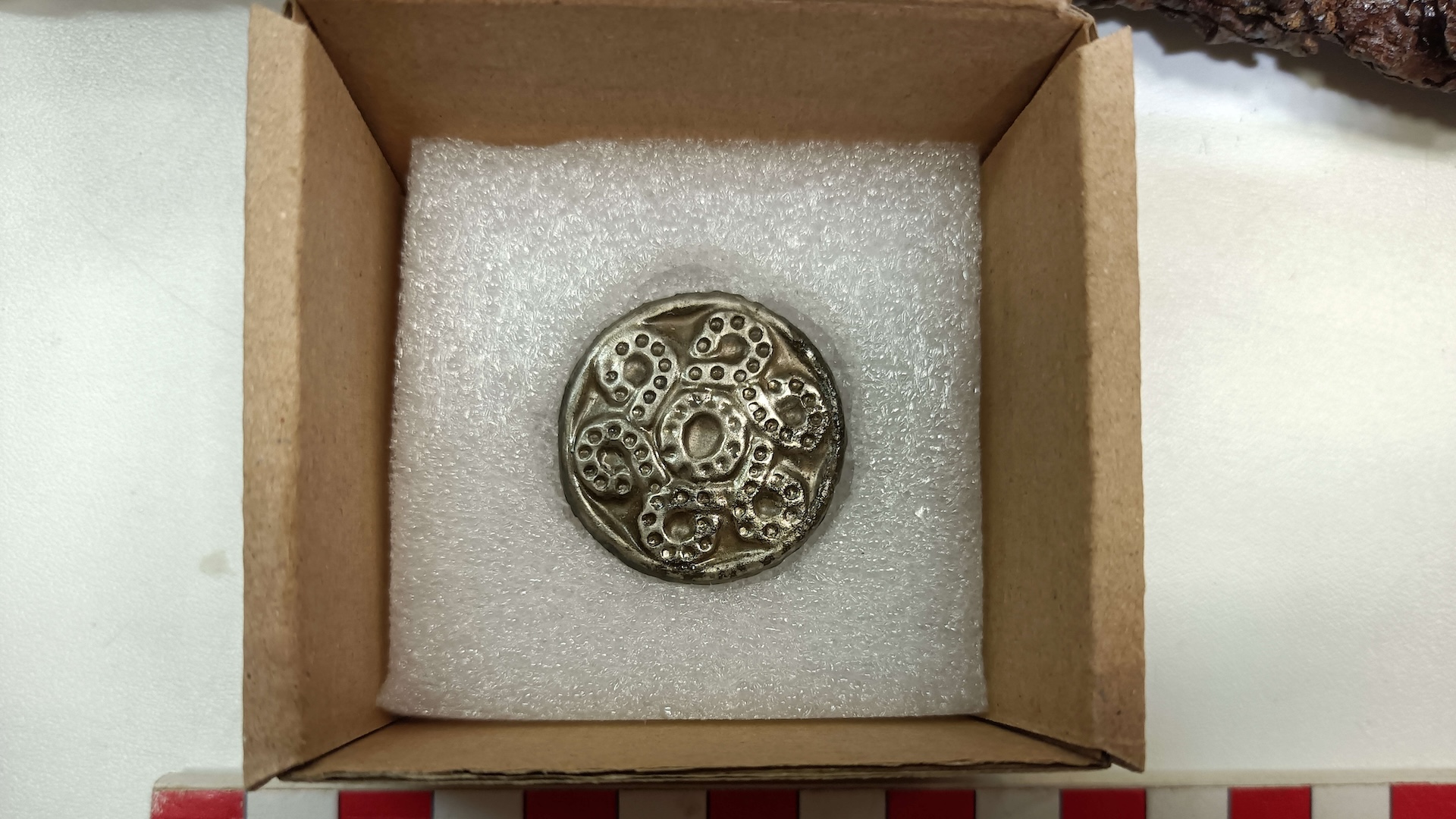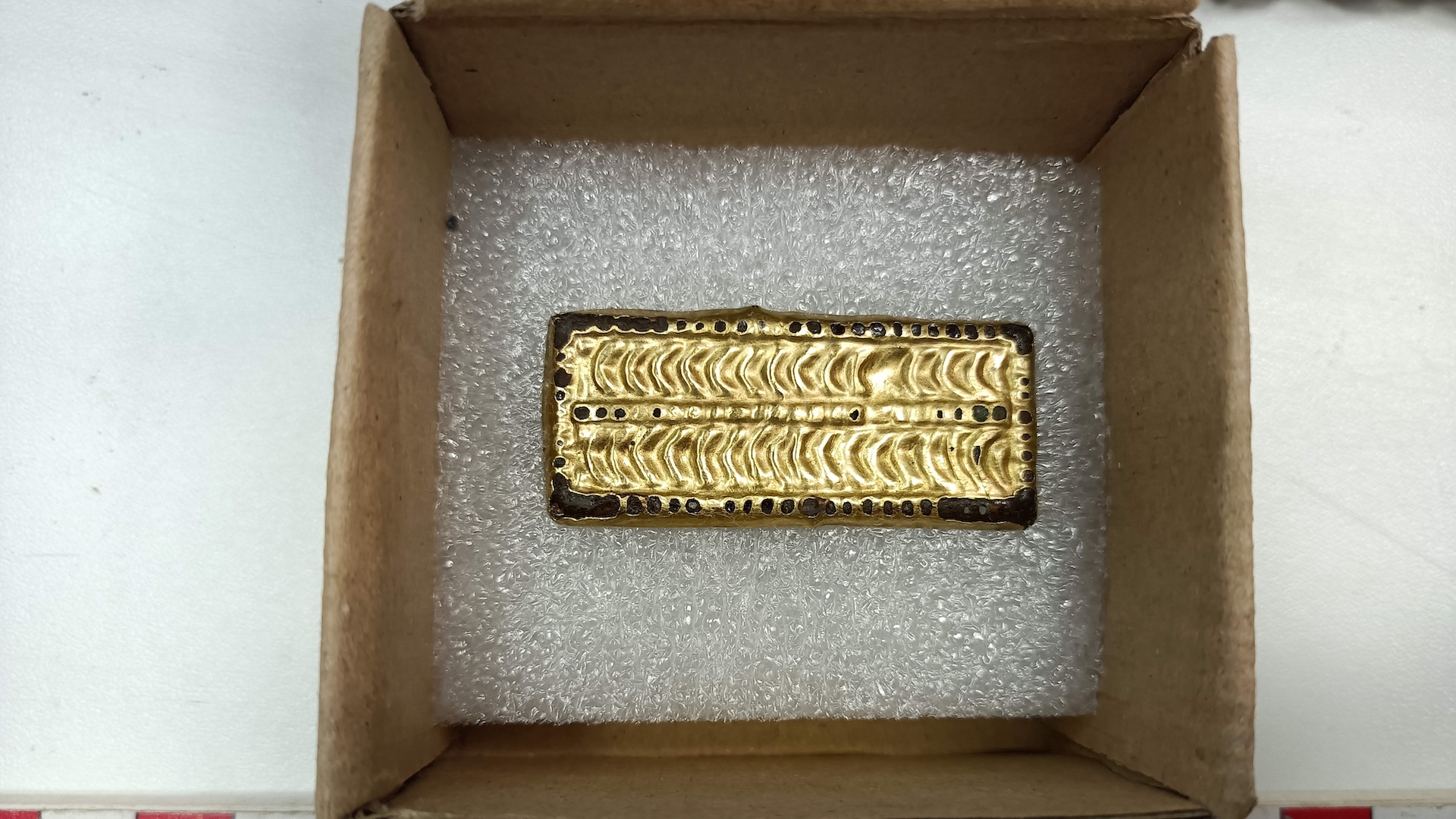Archaeologists in Hungary have unearthed the remnants of a rare iron saber, jewelry and other artifacts in the 1,300-year-old tomb of an elite warrior.
The elegantly curved sword — a type used mainly by warriors on horseback — is badly rusted, but it still has traces of fine decorations on its blade that reveal the craftsmanship used to make the ancient weapon.
The tomb — located near the city of Székesfehérvár (also known as Fehérvár), about 30 miles (50 kilometers) southwest of Budapest — was spotted by satellites in orbit, according to a translated statement from the Szent István Király (King Saint Stephen) museum there.
The excavations are part of the Hungarian National Museum and the King Saint Stephen Museum’s Cemeteries from Space program, which analyses crop marks in satellite imagery to detect buried archaeological sites.
Pannonian Avars
The newfound tomb dates to between A.D. 670 and 690, when the region was part of a vast “Avar Khaganate” — a type of kingdom — in Central Europe, centered in the Carpathian Basin of what’s now Hungary.
The Avars from Central Europe are now called “Pannonian Avars” (the Byzantine Empire called that region “Pannonia”) to distinguish them from the semi-nomadic Avars of Central Asia, with whom a 2022 genetic study suggested they were related. (An entirely unrelated people, called the “Dagestani” or “Caucasian” Avars, live now in the Caucasus Mountains — ethnographers think their shared name is a coincidence.)
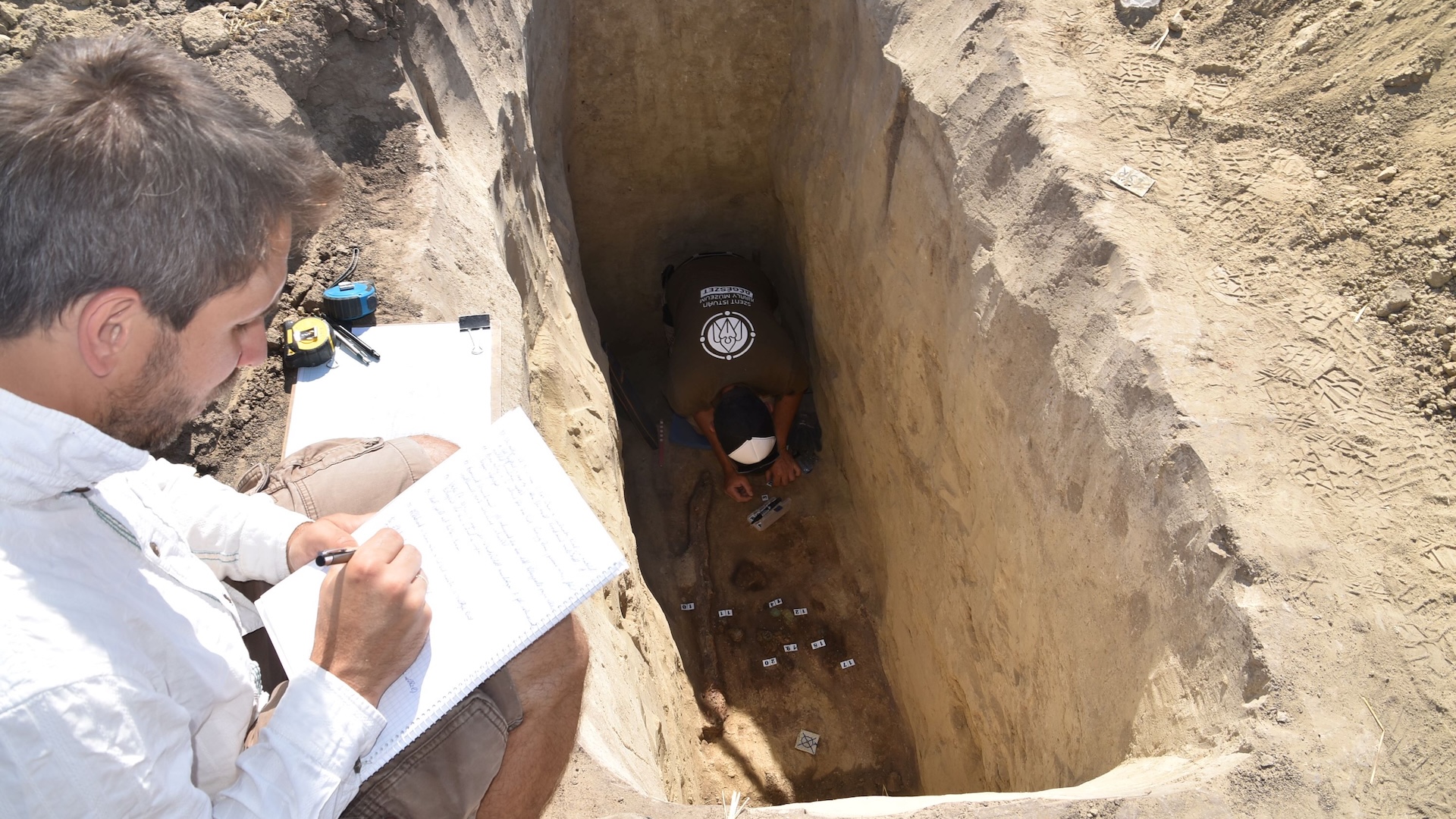
According to the Byzantine-era historian Menander Protector (a name he earned as a guardsman for the emperor) the Byzantines in the sixth century thought the Pannonian Avars were the same Central Asian Avars they’d heard about in the fifth century and greatly feared — but never met.
Scientists and historians now think, however, that the Pannonian Avars were a different confederation of semi-nomadic Eurasian steppe peoples, possibly led by a Turkic or Mongolian elite. They left no written language, making their culture enigmatic today. But a 2024 genetic study of a Pannonian Avar cemetery suggests that the women traveled to their husband’s village upon getting married.
Archaeologists said there were signs that the tomb near Székesfehérvár had been looted but that it still contained a rich selection of grave goods, including the saber.
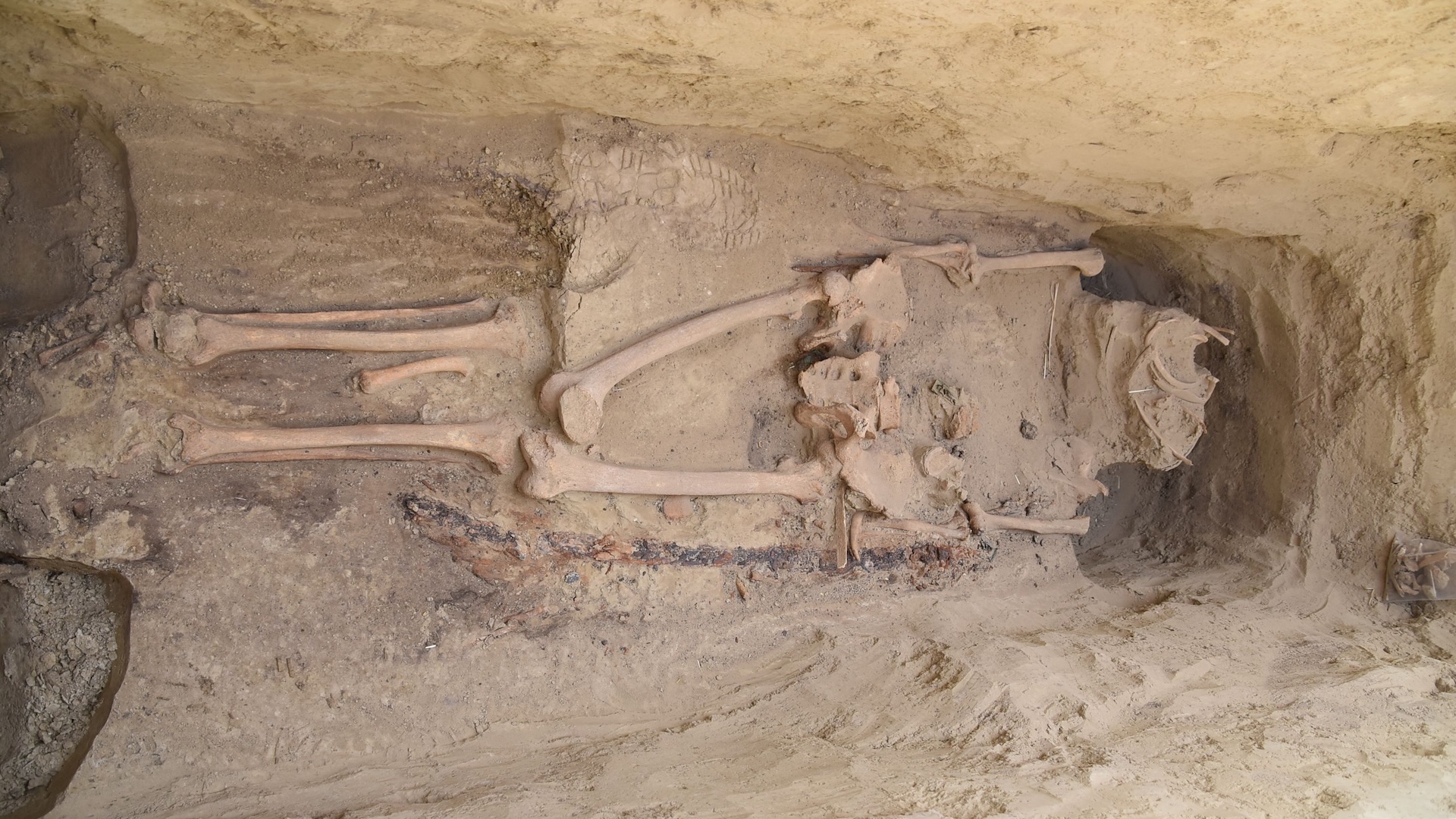
The blade and hilt of the weapon are intact, making it an exceptionally rare find from this era. It is badly rusted, however, and extremely brittle after 1,300 years underground, so it had to be lifted from the excavations on a specially designed wooden cradle, the statement said.
Ravaged remains
The archaeologists also discovered silver belt fittings, gilded metal ornaments for braiding into hair, earrings made from glass beads, a long knife, and arrowheads that were likely stored in a quiver — although the quiver itself, and the shafts and feather fletches of the arrows, have rotted away.
The warrior’s remains were also found in the tomb. While his arms and lower body were arranged in anatomical order, his head, chest and abdomen had been “ravaged” by the looters, according to the statement.
The Pannonian Avars established a kingdom in the Carpathian Basin in the sixth century, historian Walter Pohl wrote in “The Avars: A Steppe Empire in Central Europe, 567-822” (Cornell University Press, 2018).
But their battles against the Byzantine Empire, the Franks and the Bulgars contributed to the collapse of their kingdom in the ninth century and the territory falling to the Magyar people, a different ethnic group from the Volga-Ural region who were the ancestors of most modern Hungarians.
